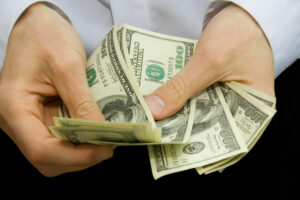 By Diane Santiago, CAPP
By Diane Santiago, CAPP
As much as we want customers to use credit cards to pay for their parking fees, some don’t for whatever reason.
Because cashiers accept cash, they need to know some basic practices: double-checking the amount tendered, not accepting counterfeit bills, counting back change, and always issuing a receipt.
- Accepting cash. Always count the cash at least twice: once in your hand where the customer can see it, and then once laid out on the counter. If the bills are new, they are more likely to stick together, so it’s very important to count them multiple times.
- Confirming no counterfeit bills. When accepting $20 bills or higher, it’s a good idea to use a counterfeit pen to check them. If the cashier suspects the bill is counterfeit, hand the bill back and ask for a different bill. Don’t confiscate the bill. Here is a website related to counterfeit bills and how to recognize them.
- Counting back change. Always count back the change. We prefer the cashiers don’t rely solely upon the amount on the register and then hand back a wad of money to the customer. It is best practice to count the money out, starting at the amount owed and ending at the amount given. Example: customer fee is $25, customer gives you a $50 bill, the cashier should count the change like this: fee was $25 + $5 = $30 and $30 + $20 is $50.
- Issuing a receipt. At our facility, we insist that the cashiers always give a receipt to every customer. This ensures that the customer knows the cashier has charged them accurately.
Following these practices could assist your cashier’s accuracy.
Diane Santiago, CAPP, is manager, landside operations, at the Port of Seattle.
